[Color Computer, Ark Royal Games]
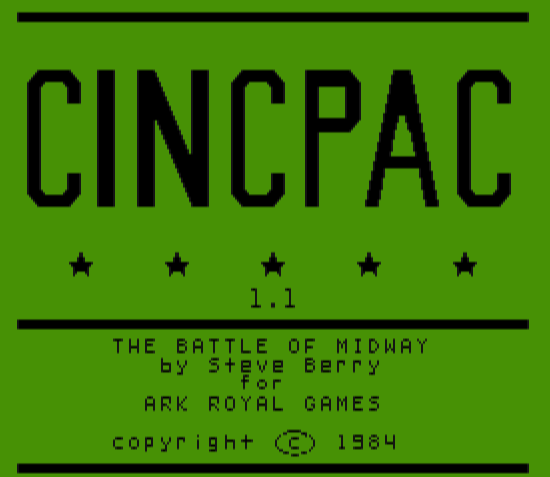
– I have finished coding my game, but I feel it is too short. You can play the complete Battle of Midway in 30 minutes! What should I do?
– Have you thought about making the Battle of Midway one week longer?
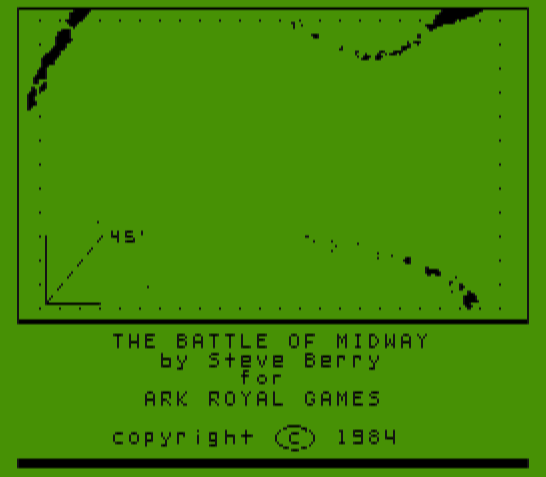
We’re back once again at the Battle of Midway, which I have wargamed 3 times so far, never satisfyingly, and never successfully. Can this minor Color Computer game programmed by one-time designer Steve Berry do better?
CINCPAC opens with a bold designer bet: the campaign starts on the 27th of May 1942, roughly one week before the Battle of Midway (4th of June). Given each turn represents one hour during which you can move your carriers (the Enterprise, the Yorktown and the Hornet) and your various air groups, that’s a long time to wait before anything happens – specifically around one hour and a half at warp speed. At least, you only need to give an order once and your units will execute it turn after turn.
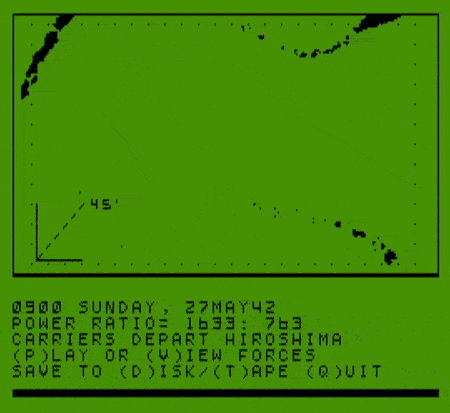
I spend one day transferring my planes from Pearl Harbor to Midway and deploying my carriers South-East of the latter. I spend another day testing the game – I don’t have the manual so it was useful. I discovered that I could land my B-17s on my carriers, but I immediately sent them back to Midway and pretended it never happened. The rest of the week was spent either skipping my turn or sending fruitless air searches.

Fast forward to the 2nd of June. As usual, I send my planes early in the morning, with 5 air groups taking off at 6 in the morning: 3 Dauntless bomber/scout wings from the carriers and 2 B-17 Heavy Bombers wings from Midway. I send them along an arc with 15° of difference each.
At around 1 PM, a new blinking dot appears South of the Aleutian islands. It ain’t mine, so it has to be the Japanese. The local Dutch Harbor airfield has no plane, so I reroute my B-29s toward it.
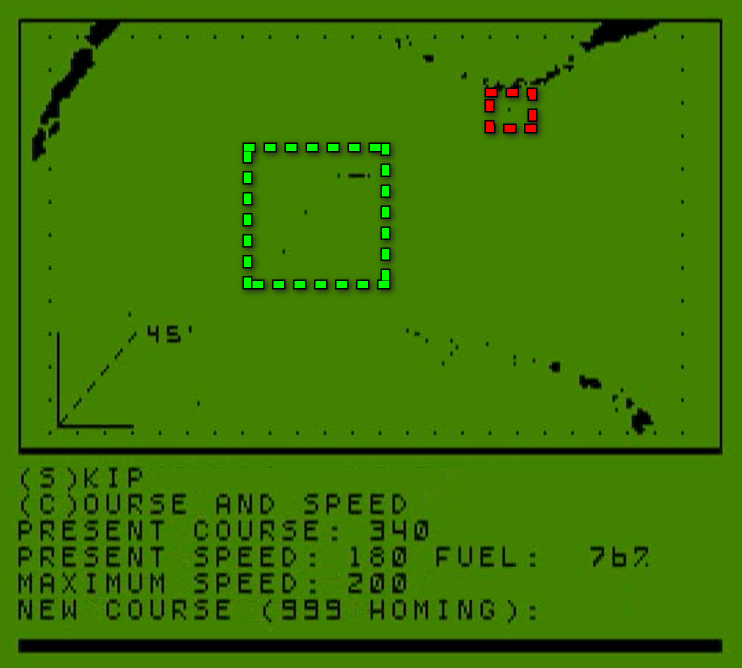
One of my B-29 wings reaches the mysterious dot at 7.24 PM and finds two Japanese light carriers: the Ryūjō and the Jun’yō.
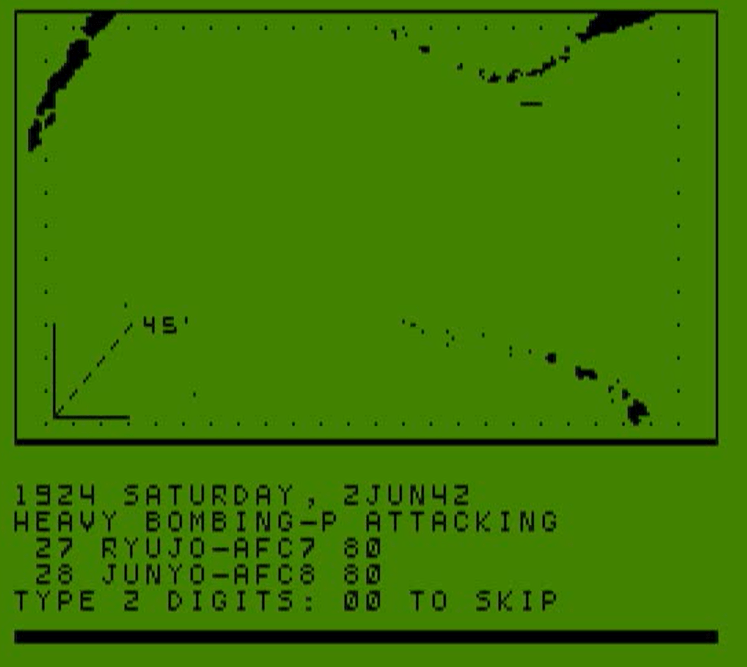
My bombers attack, inflicting “44% damage” to the Ryūjō at the cost of 56% damage:

I cannot double down with the second B-29 wing. To find your target, you need to input an angle and a speed, and then the turn/hour is resolved in 5 impulses. Alas, my second B-29 goes too fast and overshoots the Japanese fleet. It is too late to try again if I want to reach Dutch Harbor before the night, and both bomber wings retire. That’s the end of the battle for today.
Nothing happens during the night, and my bombers from Dutch Harbor take off at 6 AM (specifically: one group at 6:12, another at 6:36). Fewer than 3 hours later, Japanese bombers arrive and destroy Dutch Harbor.
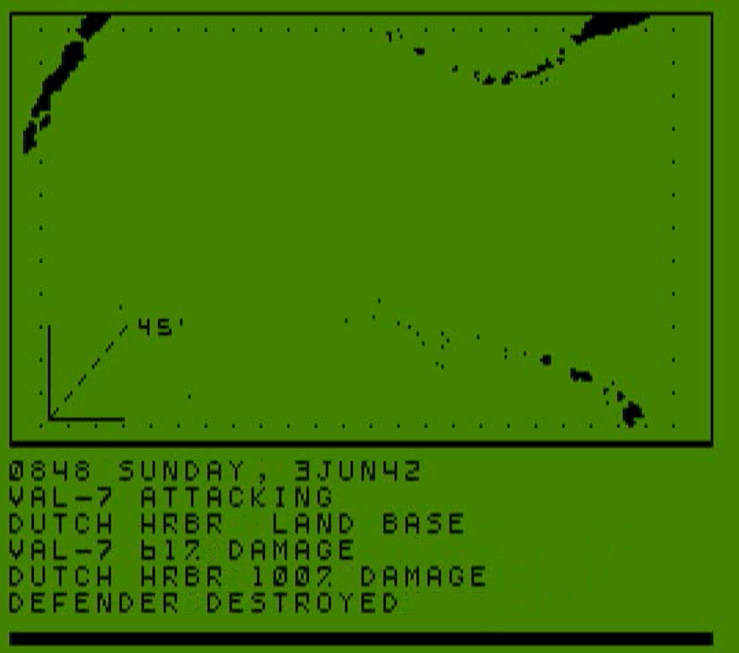
I’d like to say that my bombers avenged Dutch Harbor by finding and destroying the Ryūjō and the Jun’yō. Well, I did find them and sunk the Ryūjō, but doing so freezes the game later at 9h36, which I suppose is the time when the Japanese bomber wings returned to an absent carrier. So what I did after all was ask my bombers to politely circle above the ocean while waiting for the Japanese bombers to return, and only then attack. Doing this, I only found the Jun’yō however, I assume the damaged Ryūjō returned to base immediately after catching her planes. After an ineffective attack, my bombers headed back for Midway.
What happened around the Aleutian islands is irrelevant for the rest of the campaign anyway. The attack on Dutch Harbor had been executed in a perfectly historical fashion, which means that Midway would be attacked on the 4th of June. I have one day to prevent this – and less than that if I want to avoid a “no carrier to land on” freeze. I had sent some Dauntless even before Dutch Harbor had been destroyed, and at 11:24 I find the Japanese strike force: 4 aircraft carriers. My Dauntless go for a suicidal attack on the Akagi, damaging it.
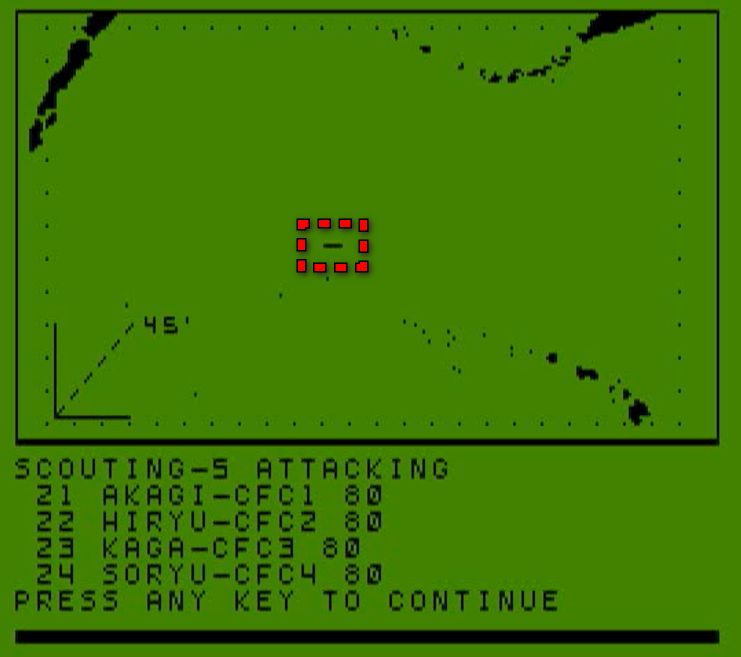
I should note that exactly at the same time, another scouting wing found the battleship group, which included the Yamato and the light carrier Zuihō. My Dauntless went for the Zuihō, to no avail. That’s all I am ever going to say about that specific Japanese fleet.
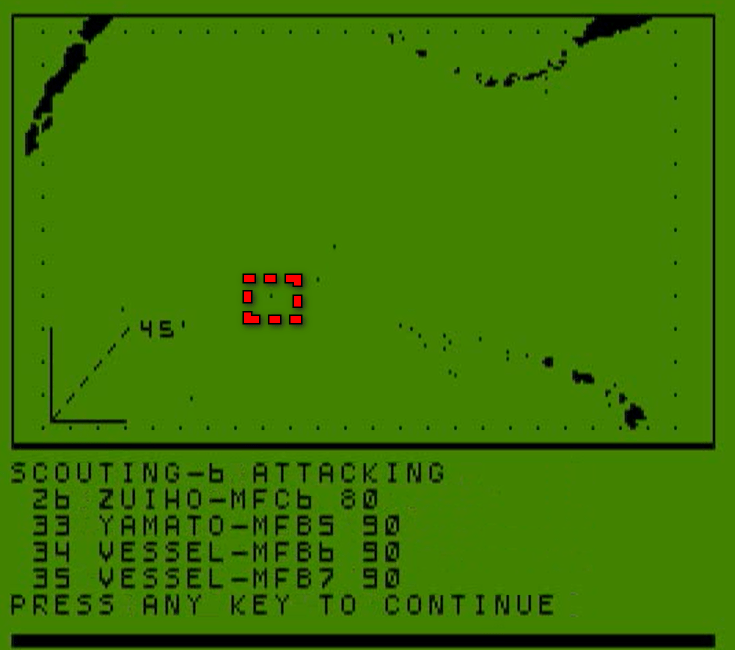
Back to the Strike Fleet: I still have one Dauntless scouting wing in the air, and it reaches the Japanese carriers less than one hour later. It is shot down like the two other wings, but it takes down the Akagi – and all the planes it had on her deck- with her!

Meanwhile, I scramble all the available bombers I have (only Dauntless, the B-29s are still transiting) and my only wing of Avenger torpedo-bombers – I don’t send my Devastator torpedo-bombers as they are much slower and unlikely to have the time to return before the night.
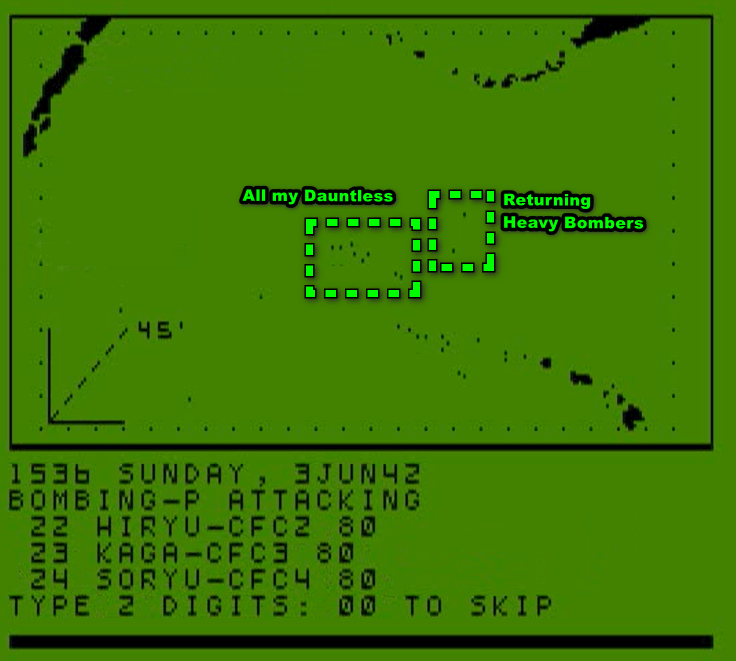
I try to regroup my planes, but I fail miserably: due to an input mistake I had moved the Hornet and the Yorktown away from Midway and the Entreprise. Additionally, with so many pulsating pixels on the map, I keep sending my bombers on an interception course toward other bombers, who are sometimes themselves circling above the remains of the initial scouting planes. Still, I manage to intercept the Japanese Strike Fleet, but my bombers arrive one after the other, which maybe explains why they never survive the engagements. I lose all my bombers, but I sink the Hiryū and damage the Kaga.
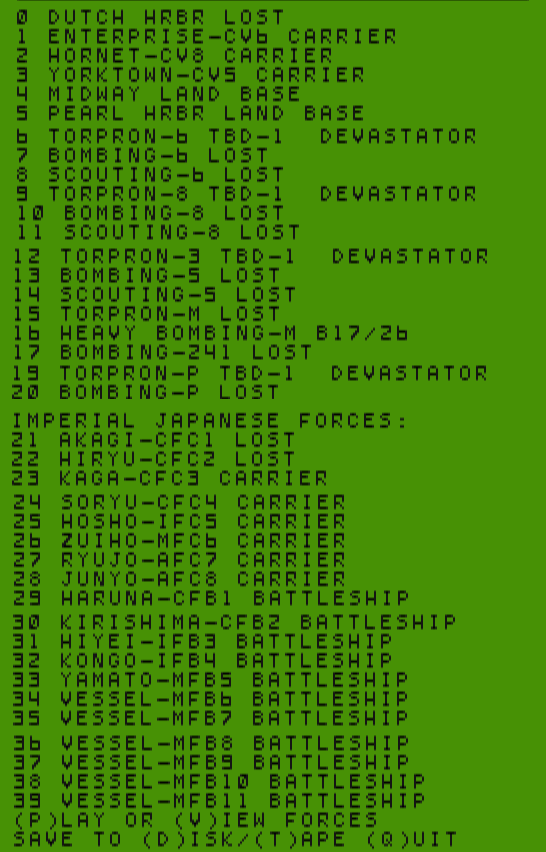
Shortly after midnight on the 4th, I send all my remaining planes (the B-29 and the Devastators) in the air and make them circle above the sea where I suspect the remaining carriers are. When the sun rises, I find them and immediately engage them. I sink the Kaga (losing a Devastator wing) and shortly after that cripple the Sōryū (at the cost of two more Devastator wings).
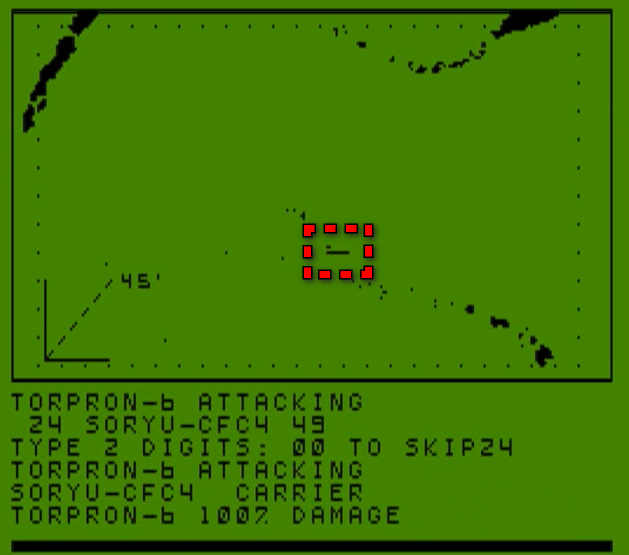
I never finish off the Sōryū, as the computer calls it a standoff and ends the game…
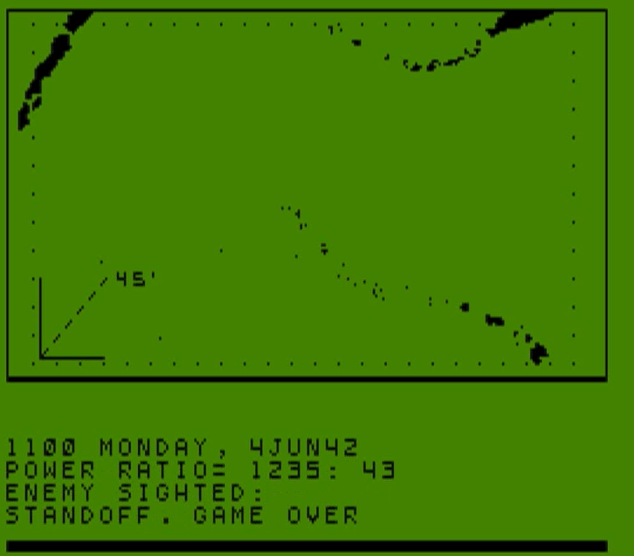
Honestly, with 3 bomber wings left, that’s just as well – there were 3 or 4 more carriers to go through after the Sōryū.
Again, I have to thank commenter LanHawk for fixing CINCPAC. The version available in the Color Computer Archives was systematically freezing when trying to launch planes.
Ratings & Review
CINCPAC – the Battle of Midway by Steve Berry, published by Ark Royal Games, USA
First release: November 1984 for Color Computer
Genre: Naval Operations
Average duration of a campaign : 3 hours
Total time played: 3 hours – I wasn’t going to play it twice
Complexity: Low (1/5)
Rating: Totally obsolete
Ranking at the time of review: 127/148
Context – As you may remember from previous articles I know very little about Ark Royal Games, and the name “Steve Berry” is too common to find anything meaningful in my research, except that the same person appears to have written a Battleship game for the Commodore, and, er, according to Commodore Magazine “This version has a major bug in that you are not actually forced to put the different parts of each ship next to each other, so in effect you can have five aircraft carriers with a length of one square instead of one carrier that is five squares long“. I wonder if you can still land a B-29 on these aircraft carriers.
Traits – The manual for CINCPAC is lost, but from the one review it received we know that the manual acknowledges that one week of doing nothing is long indeed: “the instructions suggest you use that time to practice fleet manoeuvres.” This reads like a cop-out, comically absurd when playing in 2024 and downright abusive in 1984: when playing at the historical speed of a Tandy Coco 3, a turn where I don’t have any plane in the air and I don’t move any ship takes around 90 seconds. We are talking about a minimum of 3 hours and a half to go from the 27th of May to the 1st of June! I guess you could try to use that time to go on the offensive if you are OK with facing 8 Japanese aircraft carriers with the 3 you have.
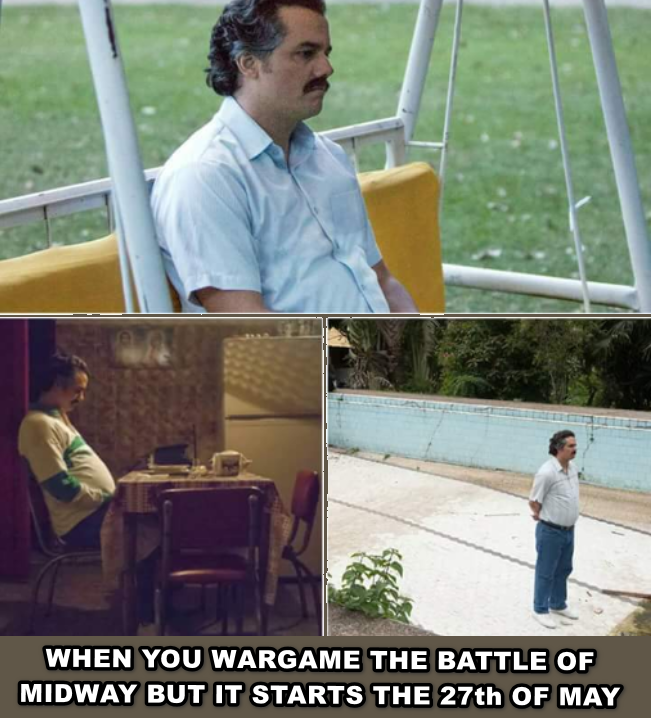
All this waiting time is for naught, because the action itself is unsatisfactory, particularly because the battles feel stupidly bloody. I understand losing all my planes when my first wave hit a fleet of 4 aircraft carriers, but when my 6th wave attacks and there is only one aircraft carrier afloat, some of my planes should be able to escape. Granted, it is possible that I am missing some critical information from the manual: maybe the Devastators are so bad that one aircraft carrier is enough to destroy them, or maybe I should have simply grouped my attack. If the latter, I would have been a lot more forgiving if anything in the UI had made it easier to coordinate your planes, like merging your fleets and displaying the enemy ones in a different colour, or by just, simply, removing the destroyed planes from the map. It’s also certain that the game would have been better if it had at least kept track of fighters somehow – like every other Pacific War game out there.
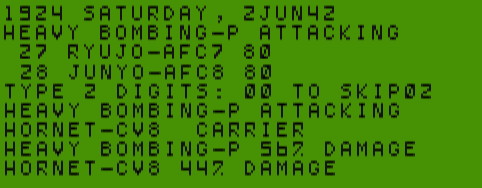
This is how I discovered that the Japanese have 16 air wings and no air base.
Did I make interesting decisions? There are occasional decisions in CINCPAC, but the only really interesting one in my playthrough was when I wondered whether I should send the Devastators on the 3rd of June or wait for the 4th. Retrospectively, it would not have mattered at all as the Devastators would not have survived their attacks.
Final Rating: Totally obsolete – This was the Tartar Steppe of wargaming.
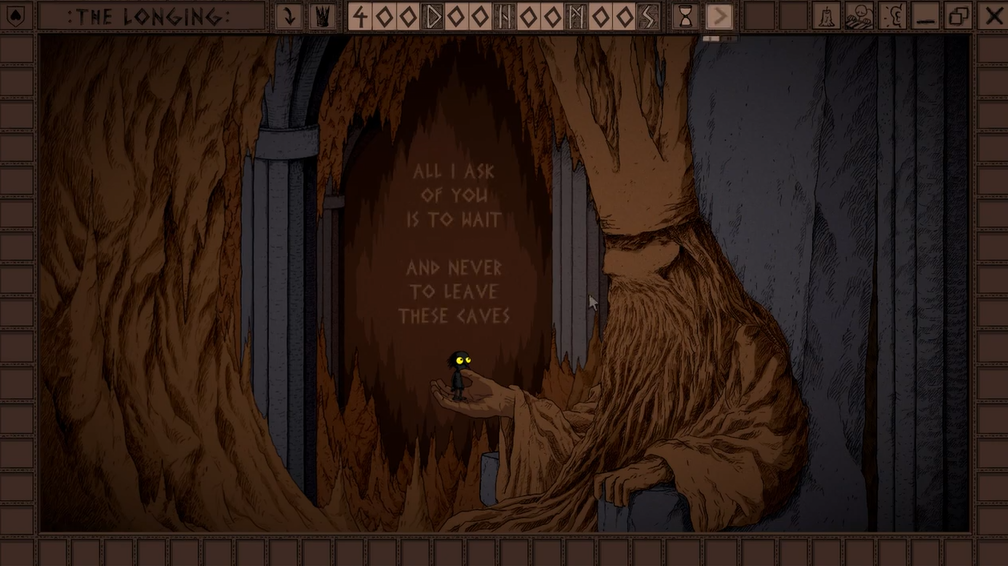
Reception
As with all the Coco wargames, CINCPAC went under the radar. It only received the traditional review in The Rainbow Magazine. This one was penned in August 1985 by Larry Elman, and it reads like an exercise of trying to tell the truth while spinning everything in the most positive way because look, we owners of the Color Computer are all part of a friendly close-knit community. The article ends up with Elman quipping about landing his B-17s on the USS Enterprise and, a few lines later, commenting: “I was unprepared for how well Steve Berry was able to model the subtleties of naval and air warfare at Midway“. Overall, Elman notes several bugs – including the “ghost assets”, which he generously calls “an anomaly“, almost a feature: “Personally, I feel the presence of the ghosts provided the touch of uncertainty needed in a combat game.” He finishes with a beautiful underhand compliment: “It is good enough to call itself a battle simulation, and it is fun enough to call itself a game.”
After a lot of minor games, I want to return to titles with more meat on their bones. It should have been Breakthrough in the Ardennes which has been on my “coming next” list for a couple of months already. But as it happens, due to some of its characteristics I ended up save-scumming through it, so I stopped my campaign, decided to shelf the game for a few weeks and move instead to SSG’s Carriers at War.